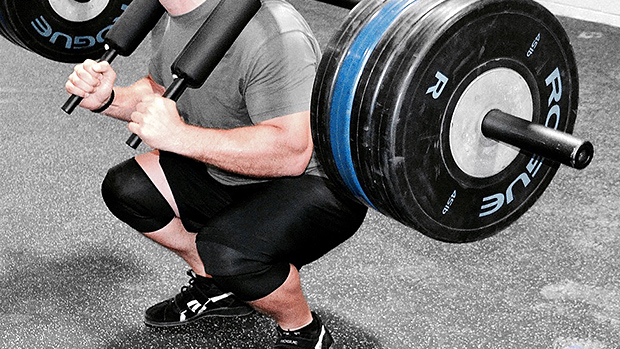Growth hormone (GH) is a big deal to lifters. If you have enough of it coursing through your veins, or if you can somehow increase levels of it through supplements, drugs, or actual GH injections, you cause fat cells to dump some of their cargo and stimulate your liver to produce insulin-like growth factor 1 (IGF-1), which promotes muscle growth.
Lifting weights in general also increases GH, but lifting weights in a specific way can increase GH levels by an amazing 1700% and marinate your muscles in a tsunami of GH.
Lifting Fast vs. Lifting Slow
Brazilian scientists wanted to know if and how much eccentric weight lifting affected growth hormone levels.
For those of you who get concentric and eccentric confused, the concentric phase is when you lift a weight and the eccentric phase is where the muscle lengthens as you lower the weight. (In the old days, we just used to call it a "negative" and if you referred to it as an "eccentric" we'd just punch you in the face.)
This eccentric or negative portion of a lift has always held a lot of mystique because various studies have shown that protein synthesis is greater after doing a controlled eccentric rep, rather than just letting it fall like a rock off a mountain pass.
Furthermore, additional studies have shown that controlled eccentric movements recruit more muscle units, which causes a greater release of GH, which subsequently increases levels of IGF-1 and results in more strength and bigger muscles.
However, there aren't that many studies that look at how "controlled" the lowering of a weight has to be, i.e., how many seconds you should take to lower it to achieve an optimal release of GH and, subsequently, IGF-1.
Neither was it known exactly how much GH is released after eccentric reps, so the aforementioned Brazilian scientists recruited 16 experienced weight lifters and split them into two equal groups.
Both groups performed 4 sets of bench press at 70% of their 1RM. The first group did sets of 8 reps in the "normal" style where they took about a second to lower the weight. The second group did sets of 8 where they took 3 seconds to lower the weight.
What They Found
The researchers took measurements of lactic acid and GH in all 16 of the lifters before the workout and then continued to monitor the levels of those chemicals for half an hour after the workout.
Both lactate and GH levels were higher in the men who took 3 seconds to lower the weight, but 15 minutes after the workout, the GH of the eccentric lifters was an incredible, hand-clapping, 17 times higher than that of the quick lifters.
What That Means to You
Here's what the scientists concluded:
"Muscular adaptations result from a multifactorial process involving mechanical, metabolic, and immune/inflammatory factors in addition to various hormonal responses. Therefore, if the emphasis in resistance training periodization is to induce a greater acute metabolic stress and GH response, we recommend manipulating the eccentric movement velocity."
Clearly, doing some 2 to 6 week long workout phases where you employ 3-second eccentrics (or maybe even slower) could result in significant muscle gain.
You could choose to do the slow eccentrics on a single targeted body part, like chest, back, or legs, or you could do slow eccentrics during your entire workout to see if the hormone-releasing effects could be compounded.
Either way, it's definitely a method worth experimenting with.
Source
- Calixto RD, et al., "Acute Effects of Movement Velocity on Blood Lactate and Growth Hormone Responses after Eccentric Bench Press Exercise in Resistance-Trained Men," Biol. Sport 2014;31:289-324.





